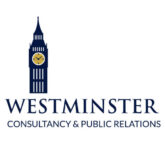Executive Summary
In an age of instant communication, public relations (PR) is no longer a peripheral activity in peacebuilding — it is a core strategic tool. The success of peace processes depends not only on negotiations behind closed doors but also on how narratives are shaped, communicated, and received by the public. NGOs and states that neglect PR risk allowing misinformation, polarisation, or mistrust to undermine fragile agreements.
This brief provides a guide for NGOs and governments to integrate PR into their peacebuilding strategies. It highlights the importance of building trust, countering disinformation, amplifying success stories, and ensuring that communication is inclusive and culturally sensitive. When properly harnessed, PR can become a force multiplier for sustainable peace.
Introduction
Peacebuilding has traditionally focused on political agreements, power-sharing arrangements, and institutional reforms. Yet many peace efforts fail not because the agreements are flawed, but because they lack public legitimacy. In conflict-affected societies, rumours and propaganda spread quickly, eroding trust in peace initiatives.
Public relations provides a bridge between decision-makers and communities. By ensuring transparency, fostering dialogue, and amplifying credible voices, PR allows peacebuilding processes to be understood, trusted, and owned by the people they affect.
💡 “Peace agreements without public trust are fragile agreements destined to fail.”
Guidelines for NGOs and States
The first principle is building trust through transparency. Communication should be proactive, providing clear updates on negotiations and outcomes. Silence or secrecy creates space for suspicion and rumours.
Second, PR strategies must focus on countering disinformation. Peace processes are frequently targeted by spoilers who spread falsehoods to derail progress. NGOs and states must develop rapid-response communication teams to debunk rumours and provide factual information in real time.
Third, peacebuilding communication should amplify success stories. Highlighting examples of communities reconciling, former combatants reintegrating, or local peace initiatives succeeding can inspire confidence and show that peace is not an abstract idea but a lived reality.
Fourth, all PR efforts must be inclusive and culturally sensitive. Messaging that only reaches elites or urban populations risks alienating marginalised groups. Communication should be multilingual, accessible, and rooted in local traditions of dialogue and storytelling.
“Public relations is not decoration in peacebuilding — it is the infrastructure of trust.”
Conclusion
In today’s information-driven world, peacebuilding without effective communication is incomplete. PR is not simply about image management; it is about creating the conditions in which peace can take root. By building trust, countering disinformation, celebrating progress, and engaging inclusively, NGOs and states can transform PR into a tool for resilience and reconciliation.
At Westminster Consultancy, we argue that communication is not an afterthought but a central pillar of peacebuilding. Organisations that invest in PR as part of their peace strategies will not only strengthen the legitimacy of agreements but also enhance the durability of peace itself.

